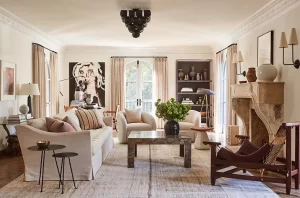In the realm of home improvement and property management, the term “fencing” takes on a practical and aesthetic significance. Beyond its utilitarian function of providing security and privacy, the art of creating a fence involves a careful blend of design, materials, and functionality. In this article, we will explore the multifaceted world of fencing – not in the sporting sense, but in the context of constructing physical boundaries around our homes and properties.
The Purpose of Fencing
Fencing, in the context of property enclosures, serves various purposes that go beyond merely delineating boundaries. A well-designed fence can enhance curb appeal, add value to a property, and provide a sense of security. Understanding the specific needs and goals of fencing is crucial before embarking on the journey of creating one.
Design Considerations
When considering fencing McKinney, aesthetics play a significant role. The design of a fence can complement the architectural style of a home, create a harmonious landscape, or serve as a focal point. Homeowners often choose between various styles, such as picket fences, privacy fences, ornamental fences, or even modern, minimalist designs, depending on their preferences and the intended function of the enclosure.
Materials Matter
The choice of materials is a critical aspect of fencing that can significantly impact both the appearance and durability of the structure. Common fencing materials include wood, vinyl, metal, and composite materials. Each material comes with its unique set of advantages and considerations, such as maintenance requirements, longevity, and cost. Selecting the right material ensures that the fence not only serves its intended purpose but also stands the test of time.
Security and Privacy
Fencing is often synonymous with security and privacy. Homeowners may opt for tall, solid fences to shield their property from prying eyes, create a secluded outdoor space, or keep pets and children safely contained. Combining aesthetics with functionality, these fences become a fundamental aspect of a home’s livability.
Installation and Maintenance
The process of creating a fence involves careful planning, precise measurements, and skilled installation. DIY enthusiasts may choose to tackle the project themselves, while others may opt for professional installation to ensure a seamless and durable result. Regular maintenance, such as painting, staining, or treating the fence, is essential to preserve its appearance and structural integrity over time.
Local Regulations and Permits
Before embarking on a fencing project, it’s crucial to be aware of local regulations and obtain any necessary permits. Zoning laws and homeowner association guidelines may dictate the height, style, and placement of fences. Adhering to these regulations ensures a smooth and legal installation process.
Environmental Considerations
As sustainability becomes an increasing concern, environmentally friendly fencing options are gaining popularity. Choosing materials that are renewable, recyclable, or locally sourced can contribute to a more eco-conscious approach to home improvement. Additionally, landscaping around the fence with native plants can enhance its environmental impact.
Conclusion
In the realm of home improvement, creating a fence is a deliberate and considered undertaking. Beyond its utilitarian function, a fence is a statement – a reflection of the homeowner’s style, priorities, and commitment to a well-maintained and secure property. As the word “fencing” takes on a new meaning in the context of property boundaries, it invites homeowners to explore the vast possibilities of design, materials, and purpose to craft a fence that not only meets practical needs but enhances the overall aesthetics and value of their homes.




